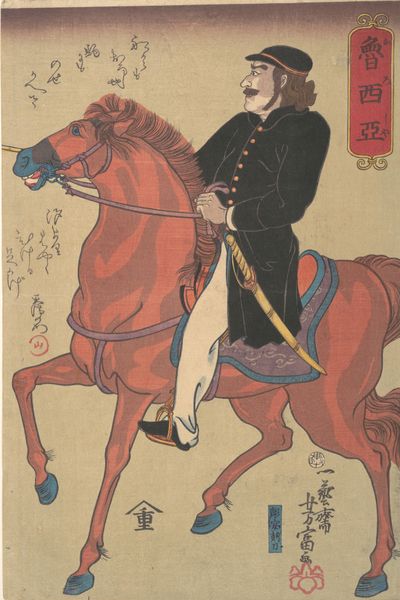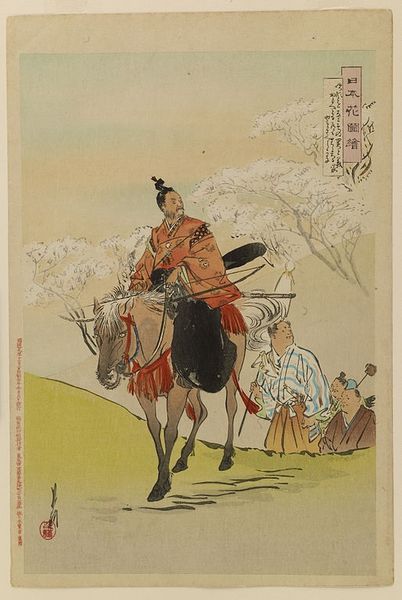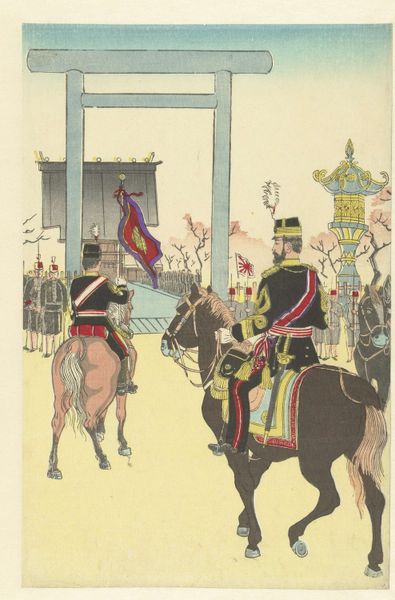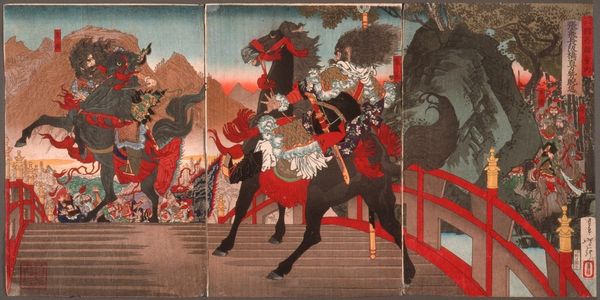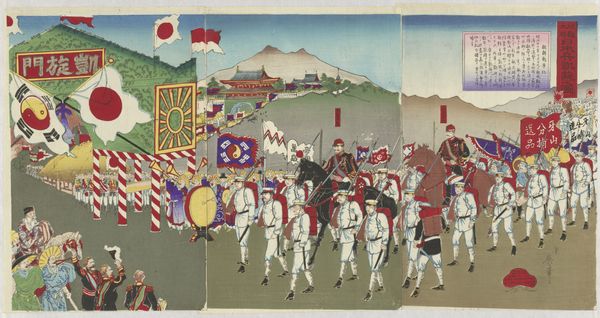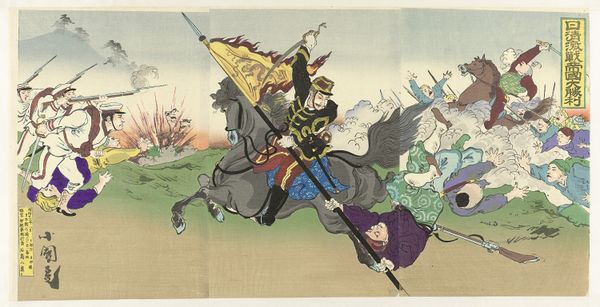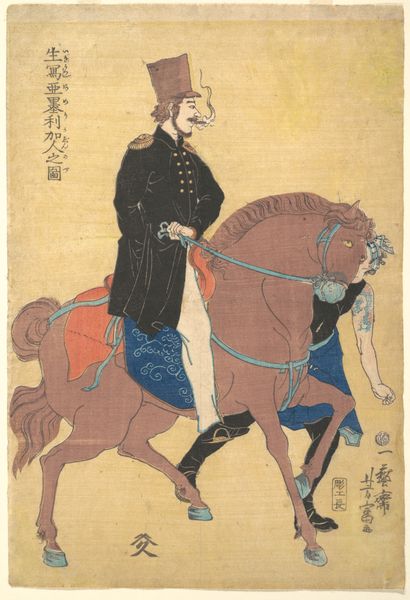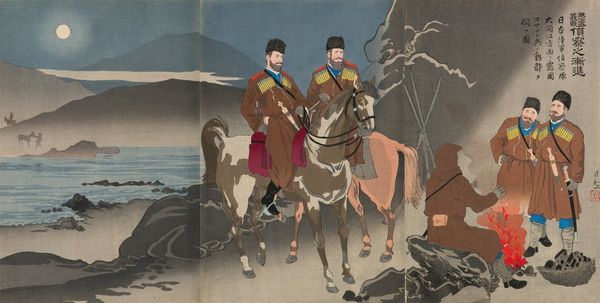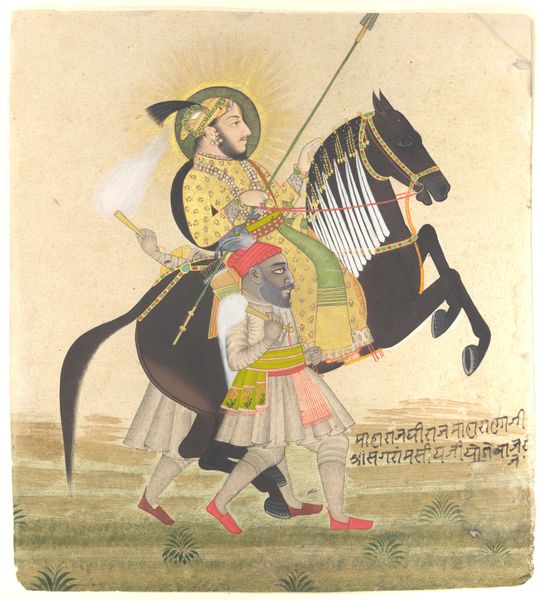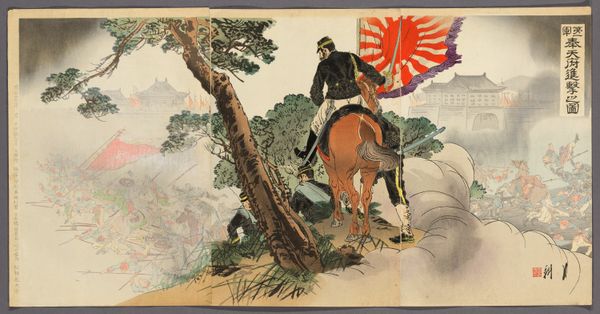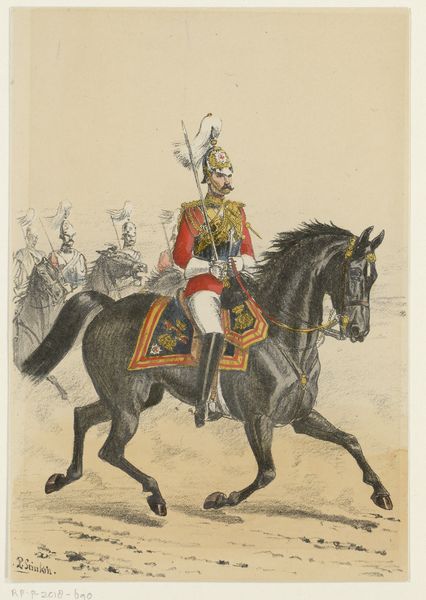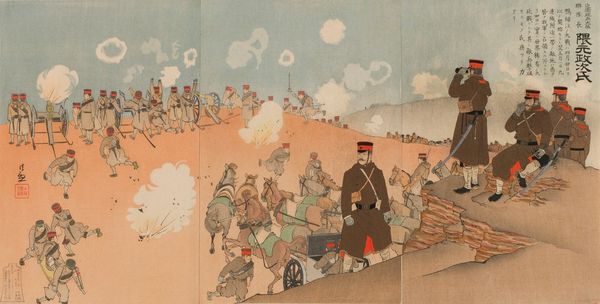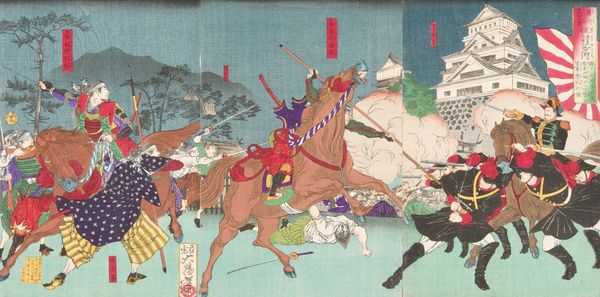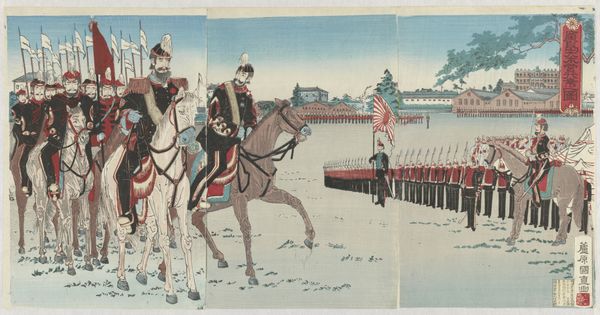
Copyright: Public Domain: Artvee
Editor: This print, *Ceremony for the Triumphant Return of the Army*, by Kobayashi Kiyochika from 1896, it’s very striking! All these figures on horseback, the banners, it has a real air of authority, but also a slightly dreamlike quality. What do you see in this piece? Curator: This image speaks volumes about cultural memory and the construction of national identity. Consider the Meiji Restoration, only decades prior. What symbols are employed here to solidify Japan's place on the world stage after centuries of isolation? Editor: Well, the military uniforms are distinctly Western. And isn't that Mount Fuji in the background, a symbol of Japan itself? Curator: Precisely. The artist juxtaposes Western military prowess with the enduring symbol of Japanese identity. This print is not merely depicting a ceremony; it's forging a visual narrative, reconciling tradition and modernity. The rigid lines of soldiers contrast against the soft rendering of Mount Fuji. Notice the repeating motifs in the flags. Editor: They create a feeling of rhythmic order. It’s a strong statement about unity and strength. So the symbols…they're working together to create a sense of national pride? Curator: Indeed. The visual language becomes a potent tool, shaping public perception and solidifying cultural memory. Do you think Kiyochika’s realist style contributes to the emotional impact? Editor: Definitely. It feels authentic, like we are witnessing history unfold. It’s fascinating to think about how art shapes how we remember events. Curator: And how it participates in forging a collective understanding of who we are as a nation. A seemingly simple print carries a wealth of meaning when viewed through a cultural and historical lens. Editor: I never considered the impact of combining visual cues, I have such a deeper understanding now, thank you.
Comments
No comments
Be the first to comment and join the conversation on the ultimate creative platform.
